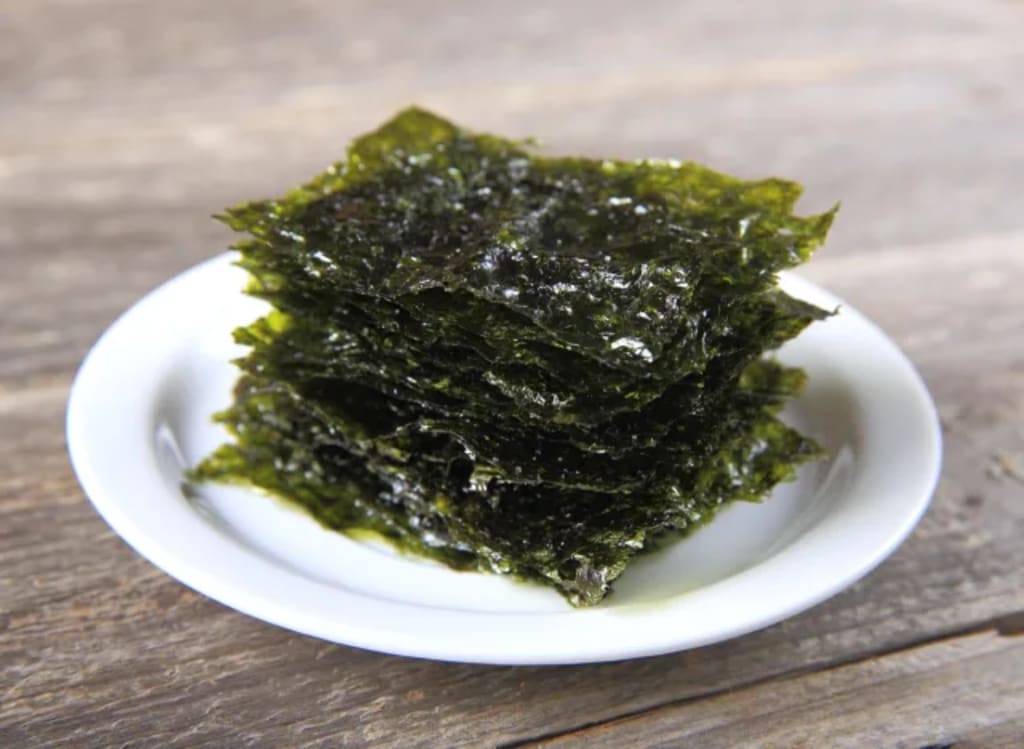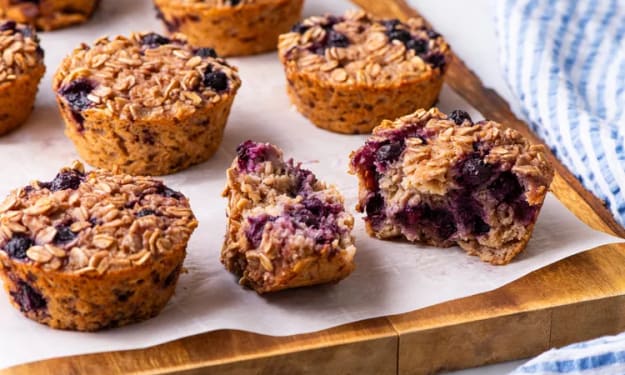11 Superfoods With Few Calories To Consume Each Day
This is for you!

You need a playlist of wholesome, low-calorie superfoods to help your body sing, much like you have one for your collection of digital music so you can instantly access your favorite songs. Even if you certainly don't want to eat your favorite cuisine every day, you undoubtedly know them by heart. Can you, however, recite a list of extremely calorie-efficient foods that will provide your body energy and prepare it to fend off disease?
Right. We may all benefit from creating a list of our favorite low-calorie superfoods to incorporate into our daily meal and snack rotation. Here is a list of the top options available to you, as suggested by knowledgeable dietitians. Check out The 7 Best Fruits You Should Be Eating Every Day, Say Dietitians for additional information before continuing.
1 Blueberries
Eat this superfood whenever you want as a snack. According to Eatthis.com medical review board member Lisa Moskovitz, RD, CEO of NY Nutrition Group, and author of The Core 3 Healthy Eating Plan, fresh blueberries provide about 80 calories per cup and are also rich in antioxidants that support brain health.
According to studies, blueberries can prevent age-related memory loss. Flavonoids are potent brain-boosting elements found in berries. In addition, blueberries are a great source of fiber, vitamin C, and vitamin K.
2 Kale
According to Moskovitz, "Kale was originally used as a garnish but has since evolved into one of the top low-calorie superfoods." This leafy dark green vegetable is a great source of fiber, vitamin C, magnesium, calcium, iron, and vitamin K. Additionally, each cup only has 10 calories.
3 Apples
Just 95 calories make up a medium apple, which is fewer than those 100-calorie snack packs of cookies. However, an apple is considerably healthier for you because, you know, one apple a day... Consume the skins because they contain the majority of the beneficial nutrients and fiber. Quercetin, catechin, phloridzin, and chlorogenic acid are just a few of the phytochemicals found in apples. Together, these powerful antioxidants may be able to help prevent the DNA damage that can result in cancer, according to a Nutrition Journal study.
4 Pomegranates and their Juice
Pomegranate seeds and juice are both a rich red color, which should alert you to their high vitamin level. Pomegranates are rich in polyphenols, which are thought to shield the body from oxidative stress and lower the risk of cancer, heart disease, and inflammation. Toby Amidor, MS, RD, a registered dietitian and member of the medical review board, advises choosing a premium, 100% pomegranate juice like POM Wonderful that has been whole-pressed to release polyphenols from the rind, pith, and arils. She is also the author of the Diabetes Create Your Plate Meal Prep Cookbook.
According to an in vitro study conducted at UCLA, 100% pomegranate juice is more potent in antioxidants than red wine, Concord grape juice, or green tea on average. A crucial component for wholesome muscle function, potassium, is also included in pomegranate juice.
5 Nonfat Greek Yogurt
Greek yogurt provides a considerable amount of calcium, a vitamin that most people don't get enough of, and is a fantastic source of protein. A 5.3-ounce single-serve container includes 14 grams of protein and about 80 calories. To increase fiber, another nutrient that is under-consumed by most Americans, Amidor advises pairing Greek yogurt with fruit, granola, or almonds. My personal go-to non-fat Greek yogurt snack dishes include the Berry Smoothie, Apple Pie Parfaits, and Lemon-Raspberry Protein Popsicles.
6 Non-starchy vegetables like bell peppers
All non-starchy veggies, in my opinion, are superfoods, says registered dietitian Amy Shapiro, MS, RD, founder of Real Nutrition and member of the Eatthis.com medical review board. They nourish you with fiber, vitamins, minerals, and water, keeping you hydrated and fighting off free radicals to delay the onset of disease and aging. Visit the website of the American Diabetes Association for a comprehensive list of non-starchy vegetables.
7 Seaweed
Researchers looked at a potential link to eating seaweed, a common dish in Japan, because of the country's extremely low colorectal cancer rates. Researchers discovered in one study that red seaweed may be able to prevent cancer. Nowadays, most grocery stores have fresh seaweed salad. Additionally, it's accessible as snacks in dried sheet form. I adore Gimme Snacks' seaweed snacks because they are crunchy, salty, and incredibly low in calories while also being high in minerals like iodine, which is essential for hormone regulation, adds Shapiro.
8 Spinach
Like any leafy green, spinach is incredibly low in calories but is incredibly nutritious. For one, spinach is high in iron and magnesium, two nutrients linked to healthy calorie-burning metabolism. "Greens (like spinach) are always a 'go-to,' because they are filling, high in water volume, and nutrient-rich with lutein and zeaxanthin to protect your eyes from macular degeneration," says Shapiro.
9 Seeds
Despite their small size, seeds are a superfood because they are packed with nutrients like fiber, vitamins, healthy fats, and minerals. Although seeds are theoretically rich in calories gram for gram, the typical serving size makes them qualify as a "low-cal superfood."
Some of the best include hemp seeds (55 calories per tablespoon), which are an excellent source of plant-based protein, chia and flax seeds (55 calories per tablespoon), which are both high in fiber for digestive health and plant-based omega-3 fatty acids. Pumpkin seeds (126 calories per ounce), sunflower seeds (51 calories per tablespoon), one of the richest sources of vitamin E, and hemp seeds (56 calories per tablespoon) are also excellent choices.
10 Broccoli
Any diet book you pick up will include broccoli as a superfood. In addition to being low in calories, it is also high in sulforaphane, a substance that, according to study, prevents the storage of body fat. According to the American Institute of Cancer Research, there is mounting clinical evidence that this phytochemical molecule is useful in preventing and treating a number of cancers, including prostate, breast, colon, skin, urinary bladder, and oral cancers.
11 Carrots
This vibrant root vegetable contains only 41 calories per 12 cup serving but is loaded with health advantages. For starters, research published in the British Journal of Pharmacology suggests that carotenoids, the pigments that give carrots and other vegetables their orange, red, yellow, and purple hues, may have anti-inflammation and anti-cancer properties.
The potent antioxidants lutein and zeaxanthin, which are also found in carrots, may help prevent macular degeneration, a common condition associated with aging that causes visual loss. And the benefits for your eyes don't end there; a half cup of raw baby carrots gives you 51% of the vitamin A you need each day, which is essential for good eyesight.





Comments
There are no comments for this story
Be the first to respond and start the conversation.